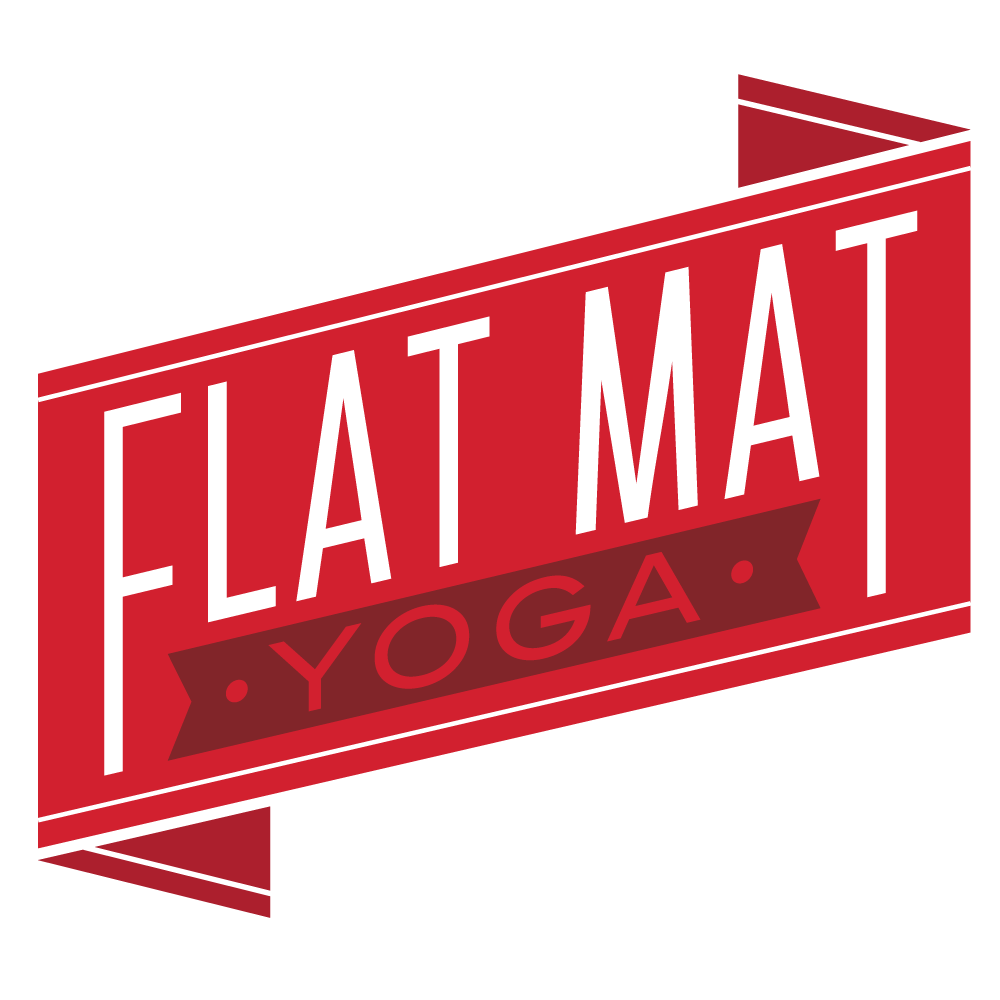If you’re tired of angry hip flexors after practicing or bouting, here’s a combo of moves you can try for some post-practice psoas relief. And of course, since one of your hip flexors is also a low back muscle, these moves can potentially help your low back feel better, too.
For those unfamiliar, your hip flexors–which include your mighty psoas, pictured above–are the muscles located at the front of your hip that connect your leg to your pelvis and abdomen. Their job? Any action that brings the front of your thigh closer to your torso: think high knees! It also unsurprisingly that when we sit a lot, they weaken, and when we skate and spend a lot of time squatting, they get grumpy.
Happier Hip Flexor Yoga Flow
Start out lying on your back with the soles of your feet flat on the floor.
Wiggle your feet away from each other so they’re as wide apart as your mat, and let your knees drop in toward each other (feet apart, knees together). Slowly begin to rock your legs from side to side. Those movements can be as big or as small as makes sense for your hips and low back–in other words, your legs don’t have to come anywhere near the floor.
Bring your feet back to hip-width apart (about in line with your sitz bones, the bony parts in your butt). Hug your left knee toward your chest, and slide your right heel toward the front of your mat. Your right leg does not have to straighten fully! You might only slide your heel as far forward as it will go without arching your back away from the floor–which might just be a few inches.
Hold for 5-10 breaths, and repeat with right knee hugged in toward your chest.
Make your way over onto hands and knees–don’t be shy about cushioning your knees with a blanket or three–and begin to move in cow/cat. As you inhale, lift head and tailbone up and feel your shoulders slide away from your ears (left image). As you exhale, round your spine and curl head and tailbone toward the floor (right image).
From cow/cat, step your right foot forward–you might want to have your hands up on blocks or books–and move into hip flexor magic.
Tuck your back toes, and press back through your left heel to begin lifting your left knee off the floor—but only lift your knee as much as you can without changing the position/height of your pelvis. That’s probably going to be a pretty tiny movement, and that’s a-okay: you’re strengthening and stretching your hip flexors. Do this about 10 times, and then lower your back knee to the floor. Before you switch legs…
…lower your left knee down to the floor. Place your right hand on your right thigh, and as you inhale, bring your left arm alongside your left ear. As you exhale, lean toward your right with your left arm overhead.
Hold for 5-10 breaths, and then switch sides: bring your left foot forward, and repeat hip flexor magic and this side-stretching lunge (left hand on left thigh, reach right arm overhead) on the opposite side.
Return to your back. (It’s easier to see when I’m standing!) While lying on your back, cross your right ankle on top of your left thigh. You might take one end of your skate noose or a belt around your right ankle, and hold the other end of the noose with your left hand. Try to keep your left hip from lifting away from the floor! You could place a book or rolled-up towel underneath your right knee to help support that.
Repeat with your left ankle crossed over your right thigh.
Last but not least, REST. You might want to place a rolled-up blanket or towel underneath your knees for a little support.
Go on, give your hip flexors a little love and attention!










